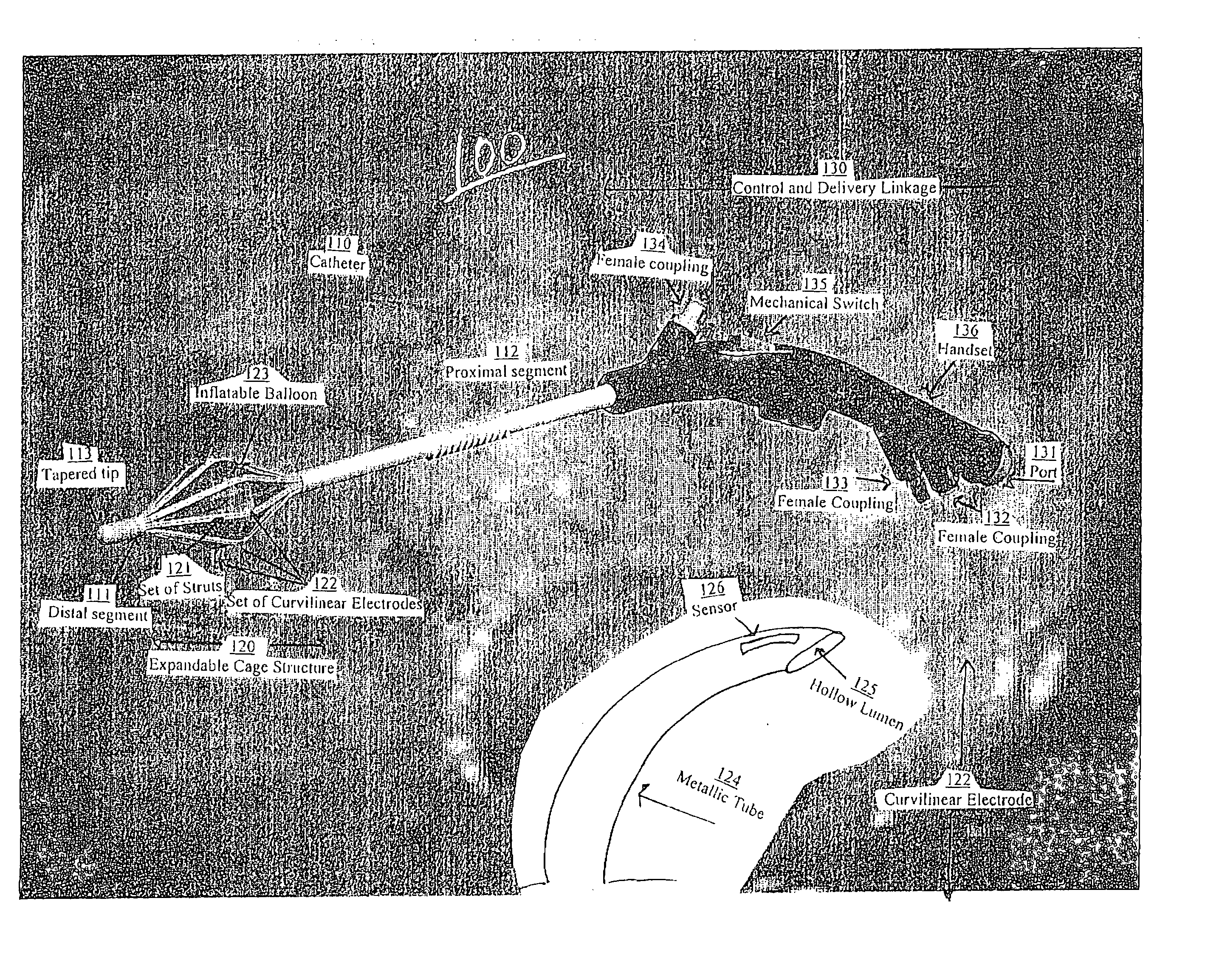Treatment of tissue in sphincters, sinuses, and orifices
- Summary
- Abstract
- Description
- Claims
- Application Information
AI Technical Summary
Benefits of technology
Problems solved by technology
Method used
Image
Examples
Embodiment Construction
[0026] System Elements
[0027]FIG. 1 is a block diagram of a system for ablating tissue associated with the rectal sphincter, esophagus, urethra and other internal body structures using a catheter and electrode assembly.
[0028] A catheter and electrode assembly 100 for treating tissue includes a catheter 110, an expandable cage structure 120 and a control and delivery linkage 130. The catheter 110 includes a distal segment 111 and a proximal segment 112. The distal segment includes a tapered tip 113 for easy insertion into an orifice. The tapered tip 113 may be either flexible or rigid depending upon the orifice into which the catheter 110 is to be inserted. The overall length of the shaft of the catheter 110 (including the expandable cage structure 120) from the tapered tip 113 to the junction where the catheter 110 is coupled to the control and delivery linkage 120 is about 65 centimeters. The diameter of the catheter 110 is about 0.4 centimeters. In an alternative embodiment, the ...
PUM
 Login to View More
Login to View More Abstract
Description
Claims
Application Information
 Login to View More
Login to View More - R&D Engineer
- R&D Manager
- IP Professional
- Industry Leading Data Capabilities
- Powerful AI technology
- Patent DNA Extraction
Browse by: Latest US Patents, China's latest patents, Technical Efficacy Thesaurus, Application Domain, Technology Topic, Popular Technical Reports.
© 2024 PatSnap. All rights reserved.Legal|Privacy policy|Modern Slavery Act Transparency Statement|Sitemap|About US| Contact US: help@patsnap.com










